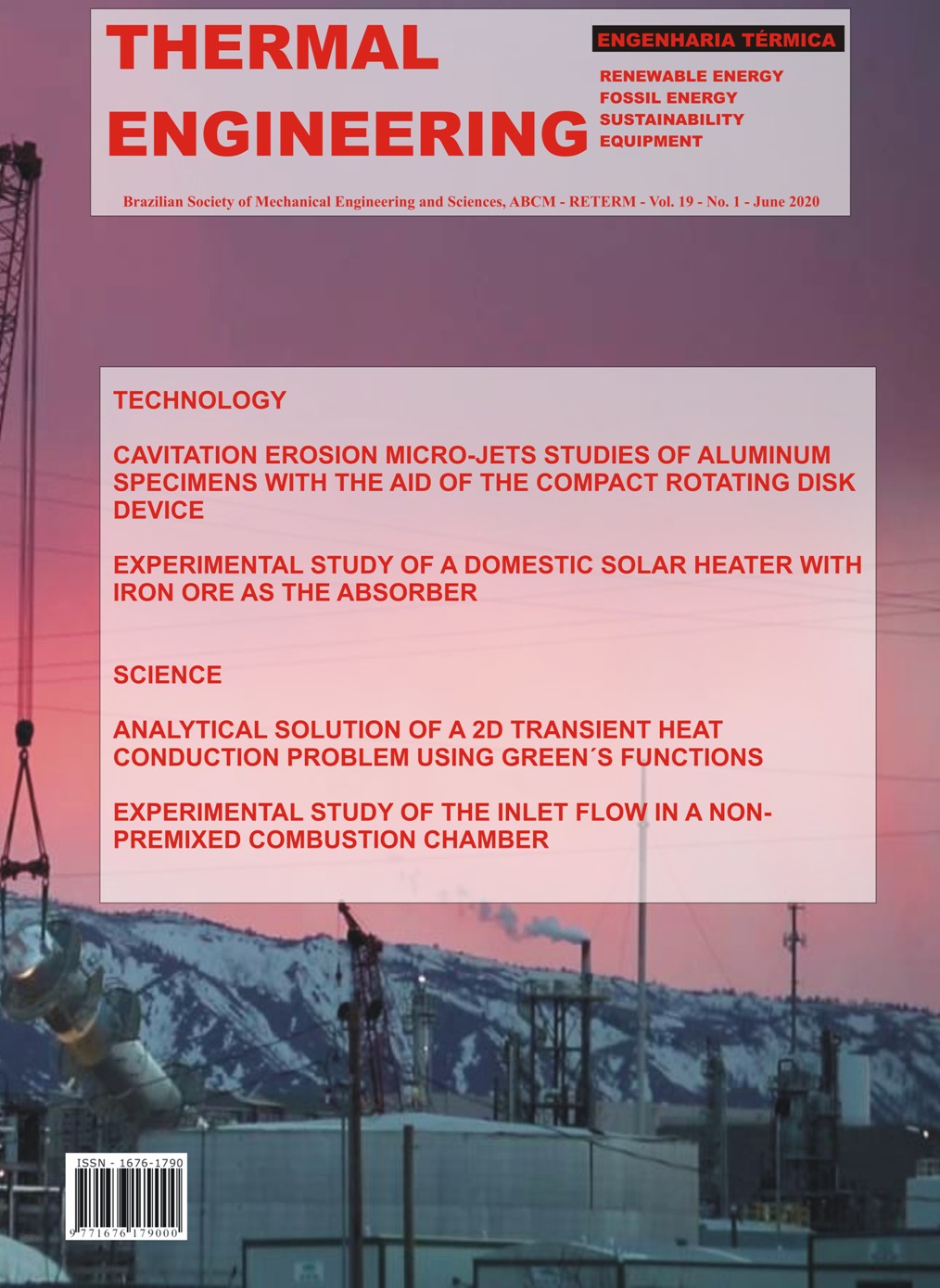SUBMISSION OF ALLEGED AND UNLIVED SYSTEMS TO PROVIDE HEAT TRANSFER EFFICIENCY
DOI:
https://doi.org/10.5380/reterm.v19i1.76426Keywords:
heat transfer, thermostats, finished and non-finished systemAbstract
The study presented is based on two automotive fin and non-fin heads made of cast aluminum that were subjected to an indirect heating called conduction and convection by means of a rectangular equipment constructed of 2mm 1020 carbon steel plate, isolated in its bases. and side by means of a 10mm thick ceramic fiber blanket sandwich, subjected to an internal heat source, a 3,000 watt finned heater, which conducted conductive and convective heat to the top cover where the heads were housed, the fin side and the non fin side. The heating was controlled by thermostat, which when it reached its highest value, was turned off and the calibration made using fans until reaching the ambient temperature. Temperature data were collected by a PICO TECH-TC-08 data entry plate, viewed on the computer through the card software and compared between both fin and non-fin heads by means of “K” thermocouples glued to each silicon block and their respective instrumentation, so that the temperature sensors were strategically positioned to prove the study. After analyzing and discussing the results, it is observed that finned bodies under this operating condition and constructive aspects allowed a better thermal exchange with the medium, producing a higher efficiency between 5 and 12%.
Downloads
Published
How to Cite
Issue
Section
License
Direitos Autorais para artigos publicados nesta revista são do autor, com direitos de primeira publicação para a revista. Em virtude da aparecerem nesta revista de acesso público, os artigos são de uso gratuito, com atribuições próprias, em aplicações educacionais e não-comerciais.



